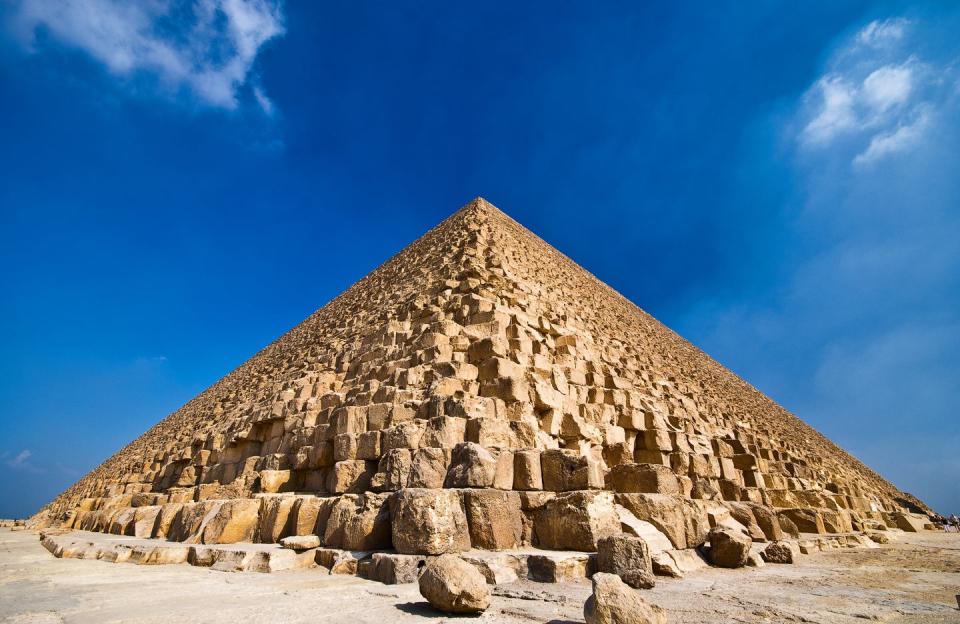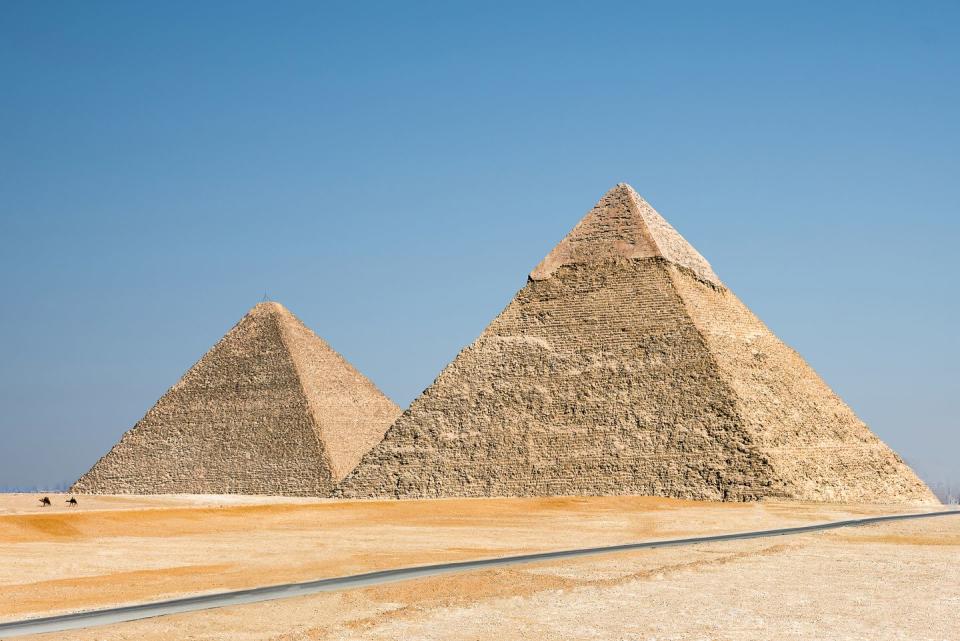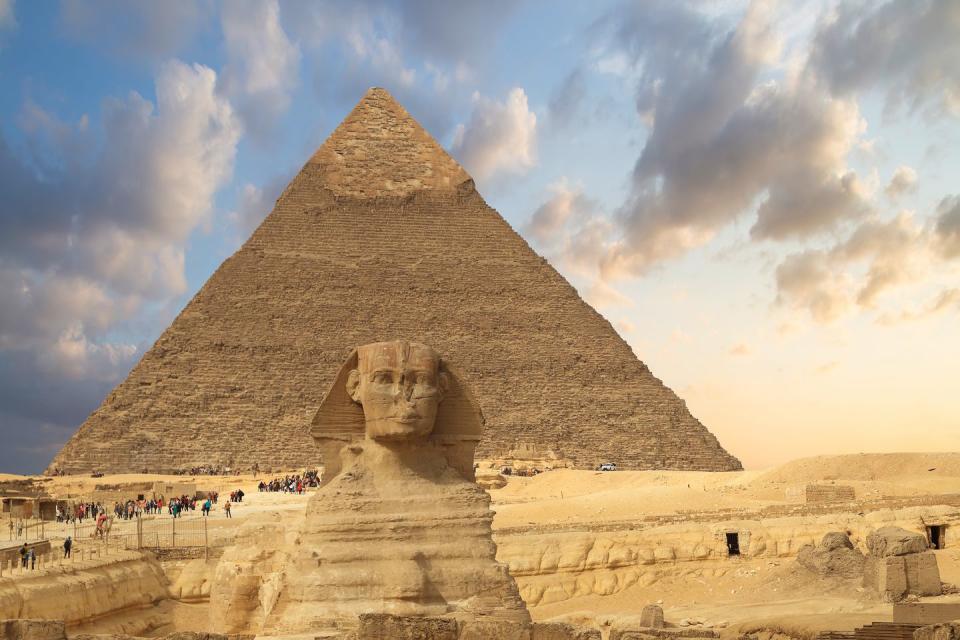Always dreamed of visiting Egypt's pyramids? Here's everything you need to know

The ancient Egyptian pyramids at Giza remain one of the world’s greatest mysteries. Despite decades of study into their construction, it’s still not exactly clear how they were built.
While a complete explanation is still elusive, archaeologists, scientists and historians have made many significant discoveries about the pyramids, the people who made them and their purpose.
So, before you embark on a once-in-a-lifetime trip to see the amazing sites of Ancient Egypt, we're bringing you the history of these fascinating and mysterious desert tombs.
When were the pyramids built?
We now know that work on the pyramids began more than 4,500 years ago, around 2,550 BC, during the reign of Pharaoh Khufu. They were created as huge tombs for the Egyptian rulers, who believed that they would become gods upon entry to the afterlife.

Inside, the burial chambers were filled with treasures that the Pharaohs wanted to take with them. The pyramids also have temples next to them as a tribute to the gods, to further ensure safe passage to the next life.
How big are the pyramids?
The largest pyramid at Giza, the Great Pyramid, is Khufu’s, and is thought to be made from 2.3 million stone blocks – reaching a height of 481 feet at its apex. The second pyramid was built by his son, Khafre, some 30 years later.

Khafre’s complex also contains the iconic sphinx, a half-human, half-lion statue, that is an essential part of any visit to see the pyramids. The final of the three pyramids is significantly smaller than its two neighbours, but with a more intricate interior, and was constructed by Pharaoh Menkaure as his tomb, in 2490 B.C.
Who built the pyramids?
Archaeological digs have discovered that the pyramids were built by skilled workers who came from all over Egypt, and lived in a temporary settlement nearby.

They were seemingly well supported by the Egyptian rulers, with ample resources and food, a sign of the reverence with which this work was regarded and its importance to the Egyptian elites. As monuments that were impressive in their scale and intended to last for eternity, as well as serving a practical and religious function, they were a projection of the civilisation’s power and wealth.
What do the pyramids teach us?
The fact that – as originally intended - they have indeed lasted through the ages has been vital to understanding ancient Egyptian society.

Many of their customs, practices and beliefs were recorded in hieroglyphics on the walls of the pyramids, and paintings depict numerous scenes of everyday life in the kingdom, revealing some of the animals and crops tended by Egyptian farmers and the outfits worn by ordinary citizens.
Discover the pyramids up close on Good Housekeeping Holidays' tour of ancient Egypt
('You Might Also Like',)


